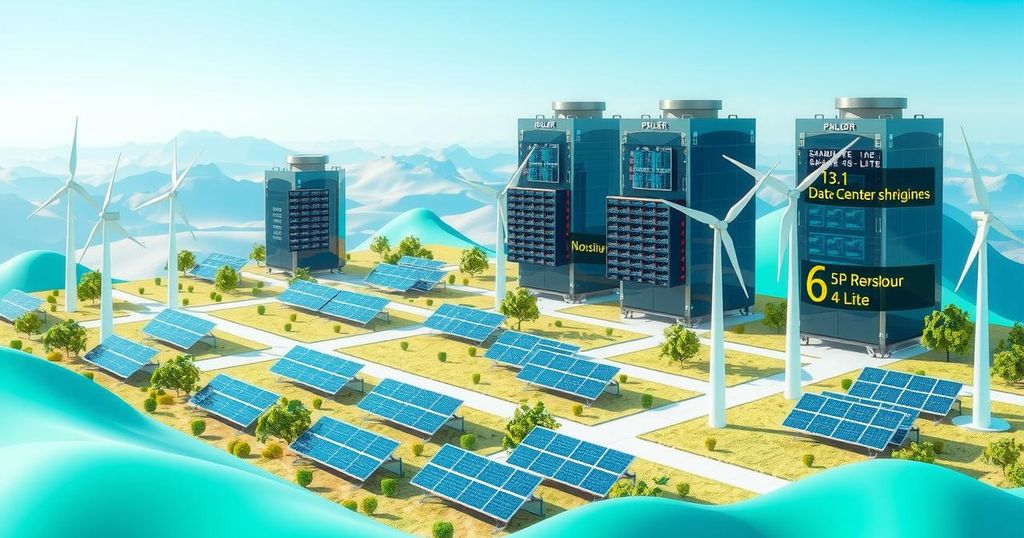What the AI Revolution Means for the Future of Energy
Sam Altman’s recent testimony underscores the mounting energy demands driven by AI advancements. Reports suggest AI’s appetite for power could rival that of entire cities, raising questions about future energy consumption linked to technology infrastructure. With major investments happening, the balance between technological growth and sustainable energy use is becoming increasingly pivotal.
A recent testimony from Sam Altman, OpenAI’s CEO, has reignited conversations about the complex relationship between artificial intelligence and energy consumption. In his statement before the Senate Energy and Natural Resources Committee, he pointed out that the cost of AI will eventually equal the cost of energy, emphasizing that the long-term strategic importance of energy resources cannot be overstated. His perspective, which focuses on productivity gains, is echoed across various reports from government entities and financial institutions.
It’s been said many times that AI will revolutionize industries, and while some caution may be warranted, it’s hard to dispute its potential to drive economic growth. Altman’s observation about AI’s growing electricity demand aligns with findings from agencies like the Federal Energy Regulatory Commission and the International Energy Agency (IEA). Their reports consistently underscore the fact that powering the hardware of the digital economy requires an immense amount of energy—a reality that is becoming increasingly significant as AI technologies scale up.
The notion that our economy is transitioning from physical, or “old,” atoms to digital, or “new,” bits has been circulating for a while. However, Altman’s comments indicate that this perspective needs revising. Nicholas Negroponte, co-founder of MIT Media Lab, once suggested in his book “Being Digital” that bits are virtually weightless and can move globally in an instant. Yet, the reality is that all bits rely on physical infrastructure requiring substantial energy to function. The sheer scale of data centers, which consume more power than whole cities’ worth of households, highlights the enormous energy demands stemming from an AI-driven future.
Take for instance these giga-scale data centers. The construction of just one center involves about 200,000 tons of concrete and 100,000 tons of steel. These structures don’t just require heavy materials; they will consume natural gas equivalent daily to a SpaceX rocket launch, which necessitates colossal machinery for energy generation. This calls attention to the energy-intensive nature of AI: as AI technology develops, so too will the need for more infrastructural resources, whether that’s traditional energy sources or renewable options. The IEA’s recent study points out that a single large AI data center can consume enough power for about 2 million households.
In just the past year, nearly 7,000 megawatts of new data centers popped up in the U.S. That’s nearly double the previous year’s construction rate. This begs the question: how much more infrastructure will get built in the coming years? Major tech companies are pouring billions into AI. BlackRock has predicted that spending could soar to nearly $1 trillion annually by 2030. It’s easy to see that every $100 billion spent on new data centers implies a hefty energy bill over the operational decade.
But as technology improves, some argue that energy efficiency will temper the increasing power demands, and while gains in efficiency do happen, they haven’t curbed the trend. The digital realm—from the Internet to smartphones—has thrived on efficiency upsurges. In fact, if our devices operated at the energy efficiency levels from decades past, they would use far more energy than entire cities. And the expectation is that the evolution of AI chips and related infrastructure will follow this pattern, albeit faster.
The insatiable demand for more information goes hand in hand with AI’s growth, creating a scenario where society will always crave more data. Unlike the world of atoms, where consumption is limited by physical resources, bits have no such boundaries. With each passing day, society’s need for knowledge deepens, spurred not solely by technological advancements but by the potential benefits—like advancements in healthcare and other industries. Google recently acknowledged the tremendous opportunity AI brings to the U.S., suggesting it could establish a new chapter in American innovation and economic growth.
Should AI achieve even modest productivity gains comparable to historical averages, the U.S. GDP could see a cumulative boost of $10 trillion within ten years. However, this growth isn’t without its own consequences—an expected surge in energy needs as wealthier populations tend to consume more. With Altman’s concerns about the merging concerns of energy and AI lingering, tech leaders are urging for diverse energy solutions rather than focusing solely on renewables.
As we revisit the past shifts in energy use during the advent of artificial lighting, history seems likely to repeat itself. AI demands might soon surpass those of lighting as its energy consumption rises. In summary, the convergence of bits and atoms is just starting to shape our landscape—how we respond to these challenges will be crucial for the future.
In the end, the journey to understanding AI and energy is not just a matter of technological evolution, but an exploration of human capacity to adapt to emerging realities. The coming years will test whether we can harness these shifts wisely, balancing growth with sustainability.
In summary, AI is poised to significantly increase energy demands as technology continues to evolve. Sam Altman’s insights highlight the intertwined relationship between AI development and energy resources. Major investments in infrastructure are expected to grow substantially, leading to a substantial spike in power consumption. The opportunity for economic growth is immense, but careful planning is essential to ensure sustainable energy practices are adopted alongside this explosive growth in technology demand.
Original Source: www.city-journal.org




Post Comment